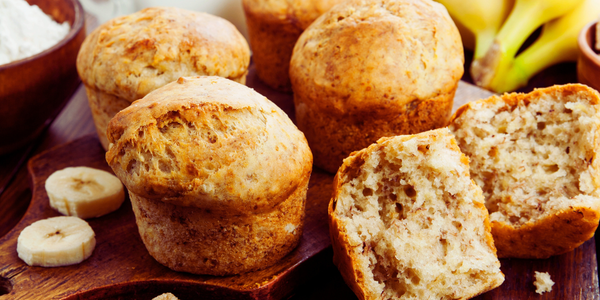9 Most Common Mushroom Types We Can Eat

Mushrooms are one of the oldest categories of organisms in the world, and have been around prior to the days of dinosaurs. They are found all over the world. It's amazing to think about, especially when you realize how much mushrooms have helped sustain humanity. Eating mushrooms is a universal cultural thing. We've been eating mushrooms since prehistory, and have been cultivating different types of mushrooms for millennia.
Why Do We Even Need Different Mushroom Types in Our Food?
Variety is the spice of life, and when it comes to the culinary arts, adding a little extra pizzaz is the only way to give your dishes a unique flavor. Having different types of mushrooms in your meals makes it easier to get more nutrients and accomplish dishes with a wider range of flavor.
As humanity's love of mushrooms grew, we began to cultivate specific mushroom types for the sole purpose of eating them. It's unsurprising to hear that we now have a serious number of mushroom species that are used in cooking. Ever wonder which mushrooms are the most popular to include in food? Here's the scoop.
1. Portobello

When it comes to popularity, few mushroom types come even remotely close to portobello mushrooms. These mushrooms are used in vegan burgers, salads, soups, and as a side dish. But, you already knew that, right? The vast majority of the mushrooms Americans eat are one form of portobello mushroom or another.
What you might not realize is that two other common names for mainstream mushrooms are all different euphemisms for portobellos. Along with the large brown mushrooms normally associated with the name, the "white button" mushrooms you see on store shelves are also portobellos. Smaller "Baby Bello" mushrooms and crimini mushrooms are also just regular ol' portabellos. The difference between their appearances deals with the mushroom's maturity, not the species.
2. Shiitake Mushroom
A favorite ingredient in Asian stir-fries, shiitake mushrooms are known for being nutrient-packed and boasting a rich texture. These mushrooms were originally found on oak trees, which is why their name translates to "oak fungus."
Fans of this mushroom like the light, yet woody flavor they can impart on a dish. If you haven't been privy to trying it yet, give a soup with shiitake a shot.
3. Oyster Mushrooms
Oyster mushrooms go by a lot of names, including angel's wings, tree oysters, and abalone mushrooms. Whatever you choose to call them, these mushrooms are known for their unique shape and for being an amazing addition to both Paleo and Keto meals.
That being said, the name is kind of a misnomer. The flavor of this type of mushroom is light and sweet, rather than fishy. That being said, it's an amazingly good choice of side dish for a seafood dinner. So, don't get squicked out if you see oyster mushrooms on a regular salad.
4. French Morels

If you want to talk about types of mushrooms with a distinctive look, French morels are it. These are the "wrinkled top" mushrooms that you often see featured in French cooking or as a seasoned side for a delicious steak dinner.
Though morels' honeycombed look doesn't exactly appear appetizing, these mushrooms are famously coveted among gourmet chefs due to their impeccably savory flavor. If you ask a hardcore foodie, morels might be one of the only mushroom types to match truffles in flavor. While they offer a similarly savory and sometimes smoky punch, morels are far less expensive.
5. Porcini Mushrooms
At first glance, it's easy to mix up portobellos and porcini mushrooms due to their similar coloration and build. It's a rookie mistake. Visually, the big difference is that porcini mushrooms have a slightly stockier build, with slightly smaller caps. The difference in flavor, though, is unmistakable.
Porcini mushrooms have a creamy and buttery texture, combined with nutty yet meaty flavor. This is one of the most popular types of mushrooms to use in Italian cooking because of that flavor punch.
6. Enoki Mushroom
This is one of the more popular types of mushrooms for Asian cooking, and rightfully so. Their small stalks are incredibly crisp, which makes them a great addition for dishes that need extra texture. Chefs use them as a way to add a little "bite" to an otherwise bland dish.
Enoki mushrooms are a little pricier than most other mushrooms on this list, primarily because they can be somewhat difficult to grow. Even so, most enoki fans will tell you it's well worth the splurge.
7. Chanterelles

There are multiple gourmet-friendly mushroom types that came out of France, and chanterelles are one of the more popular options you can try. Known for their trumpet shapes, this name actually applies to multiple subspecies of mushrooms. The most common type is a golden chanterelle, and this category boasts a light, fruity flavor that works well with almost any dish.
Black chanterelles, also known as "trumpets of the dead," are rarer. This type will offer up a seriously rich, smoky flavor to any dish you add them to.
8. Shimeji Mushrooms
This is one of the less common mushroom types on this list, at least when it comes to the United States. In Asia, shimeji mushrooms are a mainstay in cooked dishes. This mushroom category is one of the very few categories that cannot be served raw. When eaten raw, shimejis have an insanely bitter taste. The moment they're cooked, the bitterness fades away.
If you're a fan of Asian soups, shimeji mushrooms are a great pick. If you're looking for a salad addition, you might want to reconsider using these mushrooms.
9. Truffles
Oh, come on. You had to know that I'd mention truffles as part of the most popular mushroom types in food, right? Truffles aren't exactly common, per se, but they are commonly regarded as some of the most flavorful fungi on the market.
Unlike the other mushrooms on this list, truffles cannot be farmed. This means that they need to be hunted by specialized truffle pigs. The entire process of harvesting truffles is extremely involved and pricey. Since this is the case, truffles take the award as the most expensive type of mushroom in existence.
Sign up for FD's newsletter
The freshest stories from the food and dating world every week.




